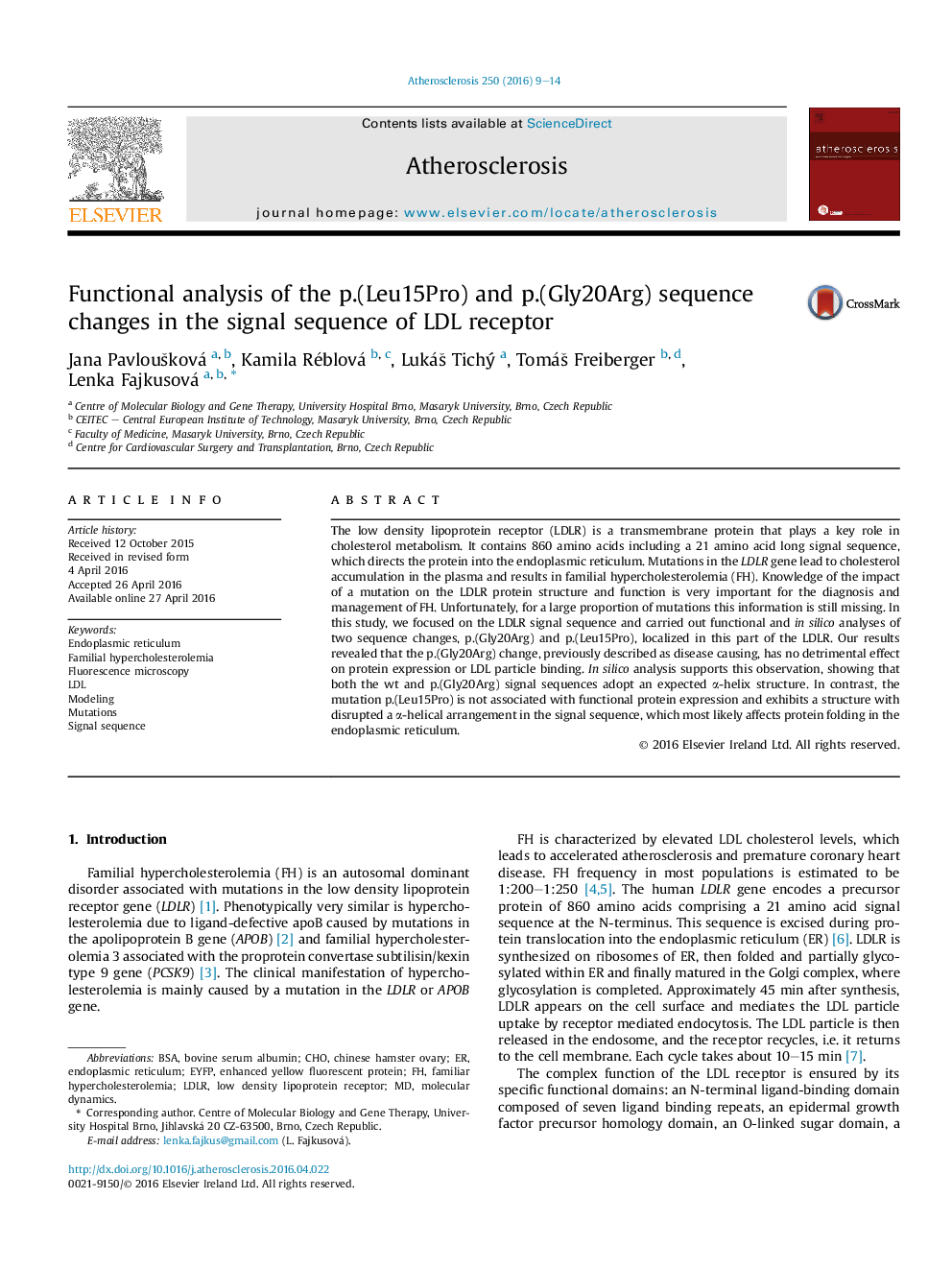| Article ID | Journal | Published Year | Pages | File Type |
|---|---|---|---|---|
| 5943153 | Atherosclerosis | 2016 | 6 Pages |
The low density lipoprotein receptor (LDLR) is a transmembrane protein that plays a key role in cholesterol metabolism. It contains 860 amino acids including a 21 amino acid long signal sequence, which directs the protein into the endoplasmic reticulum. Mutations in the LDLR gene lead to cholesterol accumulation in the plasma and results in familial hypercholesterolemia (FH). Knowledge of the impact of a mutation on the LDLR protein structure and function is very important for the diagnosis and management of FH. Unfortunately, for a large proportion of mutations this information is still missing. In this study, we focused on the LDLR signal sequence and carried out functional and in silico analyses of two sequence changes, p.(Gly20Arg) and p.(Leu15Pro), localized in this part of the LDLR. Our results revealed that the p.(Gly20Arg) change, previously described as disease causing, has no detrimental effect on protein expression or LDL particle binding. In silico analysis supports this observation, showing that both the wt and p.(Gly20Arg) signal sequences adopt an expected α-helix structure. In contrast, the mutation p.(Leu15Pro) is not associated with functional protein expression and exhibits a structure with disrupted a α-helical arrangement in the signal sequence, which most likely affects protein folding in the endoplasmic reticulum.
